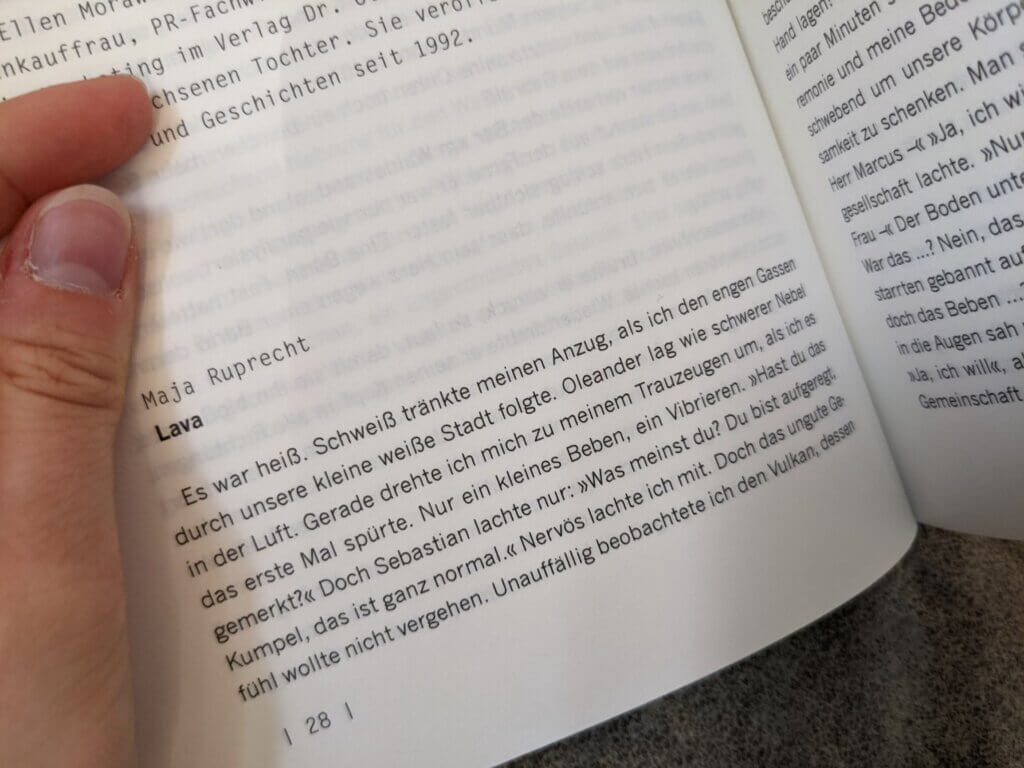Reading time: 6 minutes

WORKING METHODS The best time of the year for many students is here: it’s the summer holidays! But even though the anticipation is great, there comes a point when it gets boring. Instead of sitting in front of the PC all day playing video games, you could try writing a short story yourself.
Summer holiday boredom? Here are some more tips on what you can do during the most wonderful time of the year.
We come across short stories in class all the time. If you take a closer look at them, you will notice that they can be quite exciting, because in many cases they have a direct connection to our everyday life. Famous are short stories like “About Love” by Anton Chekhov or “The Story of An Hour” by Kate Chopin, the latter is a favourite story of mine and is definitely worth reading (here). But rather than reading short stories, I prefer to write my own. And that’s not as hard as you might think. I’ll use an example to explain my best tips on how you too can write your own short story.
Characteristics of a short story

wiki/File:Shortstory.png
- As the name suggests, a short story is rather short. It can be a hundred words or two thousand. The only important thing is that you can read the short story in one go.
- A short story has no exposition, i.e. you jump straight into the action without describing the setting or characters in any detail.
- The story ends just as suddenly as it begins, for example with a surprising event or an open ending.
- The short story usually revolves around a central theme, which often (not always!) comes from everyday situations. In principle, however, all conflicts or themes that move you are allowed.
- Usually only very few characters play a role in a short story, for example two dialogue partners or even just the narrator himself. The characters are not characterised in depth.
- The plot, which takes place in a short time frame, is described linearly and chronically, the language remains sober and concise. Expressions from everyday language are often used.
Note: Of course, not all criteria necessarily have to be fulfilled for one to speak of a short story.
Finding a suitable conflict

Before you start writing your own story, it is a good idea to read the short stories of other authors. This way you not only get an impression of how this type of text is generally structured, but you are also inspired by their themes. I myself always need inspiration for my short stories from other texts. My short story “Lava”, for example, which was published this year in the anthology “Beben” by the Literareon publishing house, is just my own interpretation of the song “Eiskalter Sommer” by Juliane Werding.
Of course, you can also choose a quote or a personal experience as the starting point for your central conflict. Write about your last dream, the best day of your life or the man you saw walking in the park last week. Or is there a social issue that interests you at the moment? The important thing is that you choose your topic concretely enough. Think about the most important character traits of your characters beforehand and under what conditions the action should take place. Ideally, you want a conflict that many other people can identify with, because they could encounter it in many situations, regardless of time and place.
Writing the story
a) Structure
The general rule for the introduction is: the shorter the better. The reader must be in the middle of your short story from the very first sentence. Don’t waste time describing the setting or the outfit of your protagonists. Create suspense as early as possible by hinting at the central conflict.
In the main part, keep building on the tension created at the beginning. Make sure there is a common thread and avoid unnecessary descriptions. You should only include them if they have a symbolic or atmospheric meaning for your story (which I personally like to do, but there is a danger of digressing from the actual conflict). Instead, lead your characters linearly to the climax or turning point of the story.
The climax of the conflict is often the ending of your short story, which is also not too long. Include an unexpected event as a turning point or stop the story in the middle of the action so that the reader has to figure out the outcome of the conflict. In any case, it is best to leave room for interpretation.
b) Language

The choice of narrative criteria is central to the shaping of your short story. I recommend choosing one of the styles listed below. Of course, other narrative forms are possible, such as choosing an authorial narrator, but their implementation is much more complicated.
- A neutral narrator who seems to be uninvolved and describes the events in the third person perspective, advantage: easy to write with a lot of room for interpretation for the reader, disadvantage: feelings or thoughts of the characters are not described.
- A personal narrator who only knows the thoughts and feelings of a single person (protagonist, antagonist or even a supporting role) throughout the story and narrates in the first person perspective, advantage: reader is directly involved in the events, disadvantage: credible fleshing out of character traits is necessary without naming them directly
- A personal narrator who tells the story in the the third person perspective, either from the perspective of only one person or alternating between different persons, advantage: can be shaped in many ways, creates a special atmosphere, disadvantage: should not be too complex, otherwise it distracts from the content, so should be viewed rather cautiously
A short story lends itself well to being written in everyday language (of the acting characters in their framework conditions). This also creates a certain atmosphere. Furthermore, you can work with stylistic means such as symbols or metaphors – provided they fit the content of your short story.
Revising the short story
In order not to lose the thread during the writing process, you should try to write through the story in one go. Only then can you choose a suitable title (anything goes here) and revise the story itself. Pay attention to the following points, among others:
- Does your introduction make you want to read on?
- Is the central conflict clear?
- Can the reader identify with the characters?
- Do you avoid unnecessary embellishments?
- Is the ending thought-provoking?
To help you get started, I have taken apart my own short story, “Lava”, and reiterated some of the tips using it as an example:



Ultimately, you have to find your own short story style. And that will happen faster than you might think. Who knows, maybe you will become the next great writer of our time? Many writers have started with short stories because they require less preparation than, say, a novel, and you can let off steam in terms of both language and content. So feel free to try your hand here. There are also many short story competitions with some attractive prizes.

